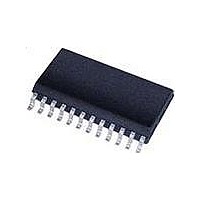SP207EEA-L Exar Corporation, SP207EEA-L Datasheet - Page 10

SP207EEA-L
Manufacturer Part Number
SP207EEA-L
Description
IC TXRX RS232 ESD LP 24SSOP
Manufacturer
Exar Corporation
Type
Transceiverr
Datasheet
1.SP213ECA-L.pdf
(19 pages)
Specifications of SP207EEA-L
Package / Case
24-SSOP (0.200", 5.30mm Width)
Number Of Drivers/receivers
5/3
Protocol
RS232
Voltage - Supply
4.5 V ~ 5.5 V
Mounting Type
Surface Mount
On Resistance (max)
7 KOhms
Propagation Delay Time
1.5 us
Maximum Operating Temperature
+ 85 C
Minimum Operating Temperature
- 40 C
Function
Transceiver
Mounting Style
SMD/SMT
Supply Current
3 mA
Supply Voltage (max)
6 V
Supply Voltage (min)
5 V
Logic Type
RS-232 Transceivers
Number Of Circuits
3
Lead Free Status / RoHS Status
Lead free / RoHS Compliant
Lead Free Status / RoHS Status
Lead free / RoHS Compliant, Lead free / RoHS Compliant
Available stocks
Company
Part Number
Manufacturer
Quantity
Price
Company:
Part Number:
SP207EEA-L
Manufacturer:
Exar
Quantity:
135
Company:
Part Number:
SP207EEA-L
Manufacturer:
MOTOROLA
Quantity:
2 000
Company:
Part Number:
SP207EEA-L/TR
Manufacturer:
PANASONIC
Quantity:
6 219
ESD TOLERANCE
The SP207E Family incorporates rug-
gedized ESD cells on all driver output
and receiver input pins. The ESD struc-
ture is improved over our previous fam-
ily for more rugged applications and
environments sensitive to electro-static
discharges and associated transients. The
improved ESD tolerance is at least +5kV
without damage nor latch-up.
There are different methods of ESD testing
applied:
The Human Body Model has been the
generally accepted ESD testing method
for semiconductors. This method is also
specified in MIL-STD-883, Method 3015.7
for ESD testing. The premise of this ESD
test is to simulate the human body’s potential
to store electro-static energy and discharge
it to an integrated circuit. The simulation is
performed by using a test model as shown
in Figure 7. This method will test the IC’s
capability to withstand an ESD transient
during normal handling such as in manu-
facturing areas where the ICs tend to be
handled frequently.
The IEC-000-4-2, formerly IEC80-2, is
generally used for testing ESD on equipment
and systems. For system manufacturers,
DC Power
Source
a) MIL-STD-883, Method 305.7
b) IEC000-4-2 Air-Discharge
c) IEC000-4-2 Direct Contact
Exar Corporation 48720 Kato Road, Fremont CA, 94538 • 50-668-707 • www.exar.com
R
C
Figure 7. ESD Test Circuit for Human Body Model
SW1
C
0
S
they must guarantee a certain amount of ESD
protection since the system itself is exposed
to the outside environment and human pres-
ence. The premise with IEC000-4-2 is that
the system is required to withstand an amount
of static electricity when ESD is applied to
points and surfaces of the equipment that
are accessible to personnel during normal
usage. The transceiver IC receives most
of the ESD current when the ESD source
is applied to the connector pins. The test
circuit for IEC000-4-2 is shown on Figure 8.
There are two methods within IEC000-4-2,
the Air Discharge method and the Contact
Discharge method.
With the Air Discharge Method, an ESD
voltage is applied to the equipment under
test (EUT) through air. This simulates an
electrically charged person ready to connect
a cable onto the rear of the system only to
find an unpleasant zap just before the person
touches the back panel. The high energy
potential on the person discharges through
an arcing path to the rear panel of the system
before he or she even touches the system.
This energy, whether discharged directly or
through air, is predominantly a function of the
discharge current rather than the discharge
voltage. Variables with an air discharge such
as approach speed of the object carrying the
ESD potential to the system and humidity
will tend to change the discharge current.
For example, the rise time of the discharge
current varies with the approach speed.
R
S
SW2
SP207E_00_072309
Device
Under
Test













